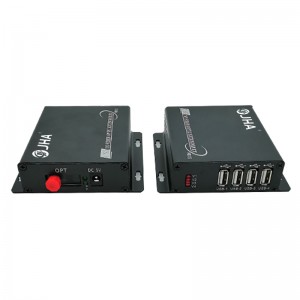Optical transceivers are also optical signal transmission equipment. Foreign optical transceivers have mature technology but are expensive. Although domestic optical transceivers are not so mature in technology, they are not expensive enough to deal with internal ones. Then what is the selection of optical transceivers?
Precautions for purchasing optical transceivers: From the signal sent to the optical fiber, optical transceivers can be divided into analog optical transceivers based on analog technology and digital optical transceivers based on digital technology. The working principle of analog optical transceiver is nothing more than modulation and demodulation, filtering and signal mixing, etc. Whether it is LED or LD, its photoelectric modulation characteristics are not linear. In the signal transmission process, distortion, interference and other inevitable problems in analog processing are inevitable, and there are insurmountable technologies in large-capacity transmission and multi-service mixed transmission. difficulty.
The situation of digital optical transceivers is different. There are only two states of “fiber and “no fiber” in the optical fiber. Therefore, the linearity of the light source is not high or almost no requirement, thereby avoiding signal loss in the processing process. In addition, digital optical transceivers are relatively easy to achieve multi-channel and mixed transmission of multiple signals. Since they are only converted into digital signals, the transmission of multiple channels and multiple signals can be easily realized with the help of TDM (Time Division Multiplexing) technology. Existing optical transceiver manufacturers can transmit 10 uncompressed real-time video images on one wavelength channel at a time.
Optical fiber network topology, optical fiber network topology determines the type of video optical transceiver. According to the topology of the optical fiber transmission network, in addition to the traditional point-to-point transmission optical transceivers, there are also node-type and ring network optical transceivers to choose from. The node-type video optical transceiver combines the front-end nodes into a chain network or a tree network. The node machine first receives the signal at each node, converts it into an electrical signal, and then exchanges and multiplexes the signal with the local node. After the photoelectric conversion, the WDM technology is used for multiplexing. Use an optical fiber for transmission. No analog-to-digital conversion is performed at each node, which reduces signal attenuation.
The transmission speed of the optical transceiver is fast, the screen is clear, and it can be used in all kinds of outdoors. It has a very wide range of performance and is widely used in industry.
Shenzhen JHA Technology Co., Ltd, A 13 Years’ Experienced Global Provider of Industrial Data Communication Solution, Reliable Performance and Unwavering Support.
Post time: Oct-26-2020






